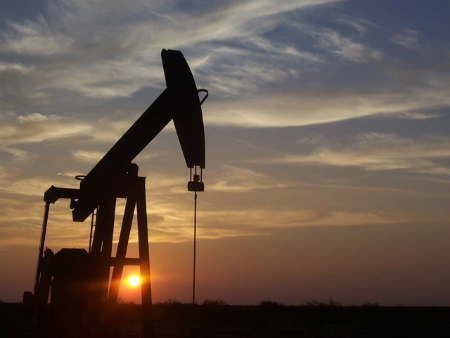Fed Survey: Activity in Top US Oil Fields Stall, Outlook Sours
(Reuters) — U.S. oil and gas activity stalled in the first quarter as production gains slowed and drillers' outlooks turned negative, according to a survey released on Wednesday by the Federal Reserve Bank of Dallas.
The bank's activity index, which measures conditions among oil and gas firms across prime oil production portions of Texas, New Mexico and Louisiana, tumbled to 2.1, down from 30.3 in the fourth quarter of 2022.
Companies reported rising costs for a ninth straight quarter and said this year's weaker prices for oil and gas are hurting cash flow and profits. Overall, a company outlook index turned negative, falling 27 points to -14.1.
"An estimated 30–40 percent cost increase in field operations, increased interest charges on borrowed money, a drastic collapse in natural gas prices combined with lower crude oil prices produced a noticeable lower cash flow," said one survey respondent.
The survey was conducted among 147 oil and gas firms between March 15 and 23, a period in which oil prices were faltering on concerns about the global banking industry. After falling around $64 a barrel in mid-March, U.S. WTI benchmark prices have recovered to around $74 a barrel CLc1.
WTI will trade around $80 a barrel by the end of the year, survey participants forecast. Natural gas prices, which are down roughly 50% from the start of the year and trading near $2 per million British thermal units, are anticipated to end the year at $3.43 per MMBtu, participants said.
While the oil production index remained positive, it fell sharply during the quarter to 10.5 from 25.8 in the fourth quarter. This comes as some companies and analysts have warned that well productivity in the best U.S. shale regions is declining.
Executives surveyed blamed Biden administration policies, permitting delays and regulatory uncertainty for their negative outlook. Others pointed to larger economic concerns.
"Volatility in commodity markets and recent banking turmoil continue to play into business dynamics and are leading to a reduction in spending plans. The dramatic pullback in natural gas prices has also led to a decrease in appetite to target gas prospects and has also led to some optional gas-rate curtailments," said one.
Supplier delivery times turned negative, indicating continued supply chain snags that have plagued the industry over the past year.
Related News
Related News

- Keystone Oil Pipeline Resumes Operations After Temporary Shutdown
- Freeport LNG Plant Runs Near Zero Consumption for Fifth Day
- Biden Administration Buys Oil for Emergency Reserve Above Target Price
- Mexico Seizes Air Liquide's Hydrogen Plant at Pemex Refinery
- Enbridge to Invest $500 Million in Pipeline Assets, Including Expansion of 850-Mile Gray Oak Pipeline
- Evacuation Technologies to Reduce Methane Releases During Pigging
- Editor’s Notebook: Nord Stream’s $20 Billion Question
- Enbridge Receives Approval to Begin Service on Louisiana Venice Gas Pipeline Project
- Mexico Seizes Air Liquide's Hydrogen Plant at Pemex Refinery
- Russian LNG Unfazed By U.S. Sanctions





Comments